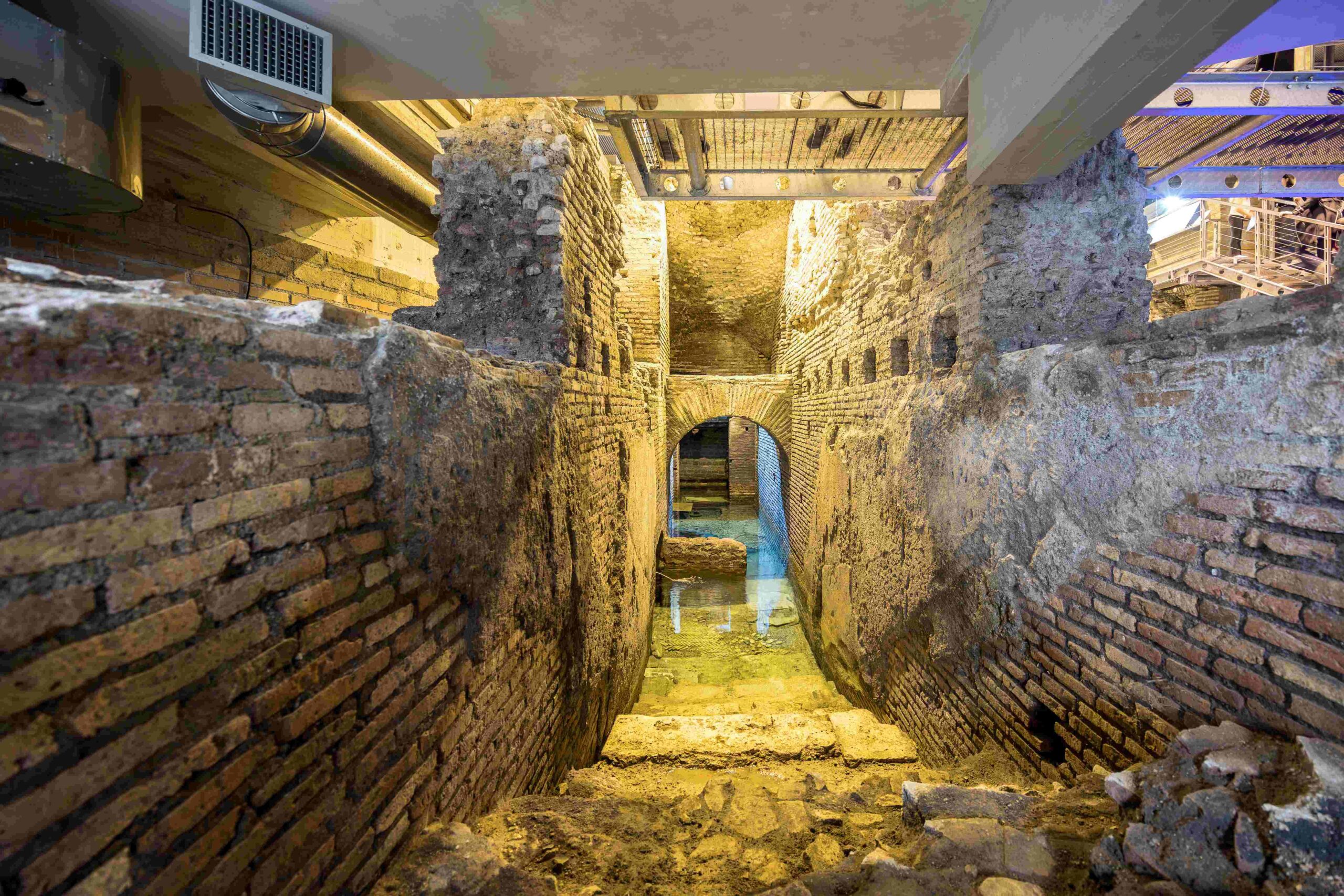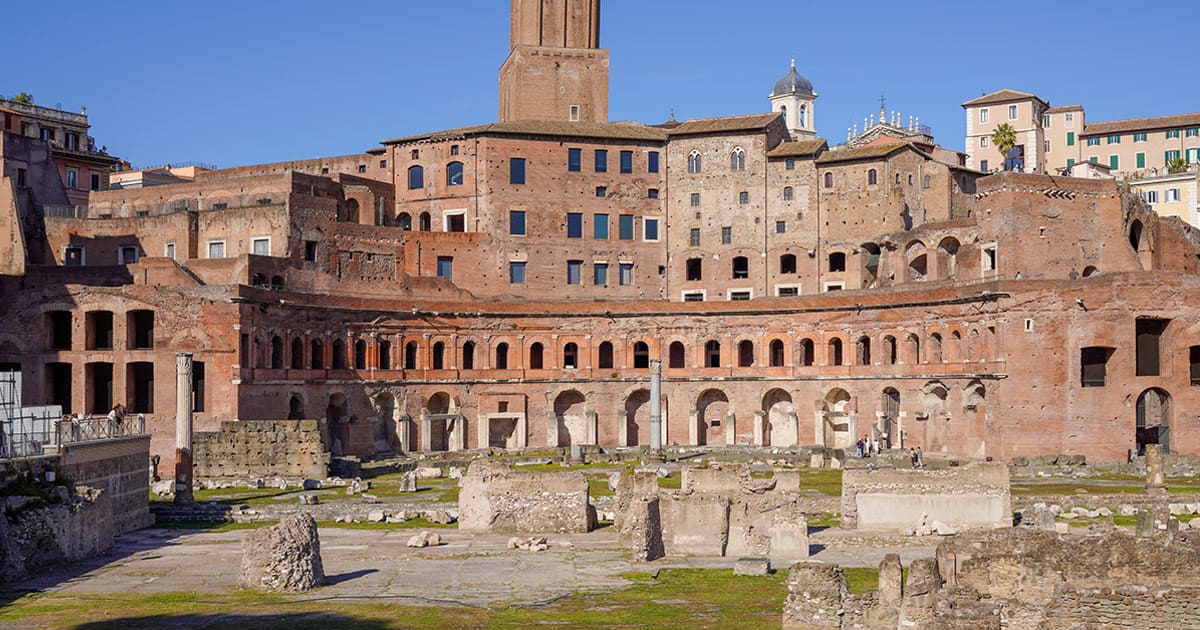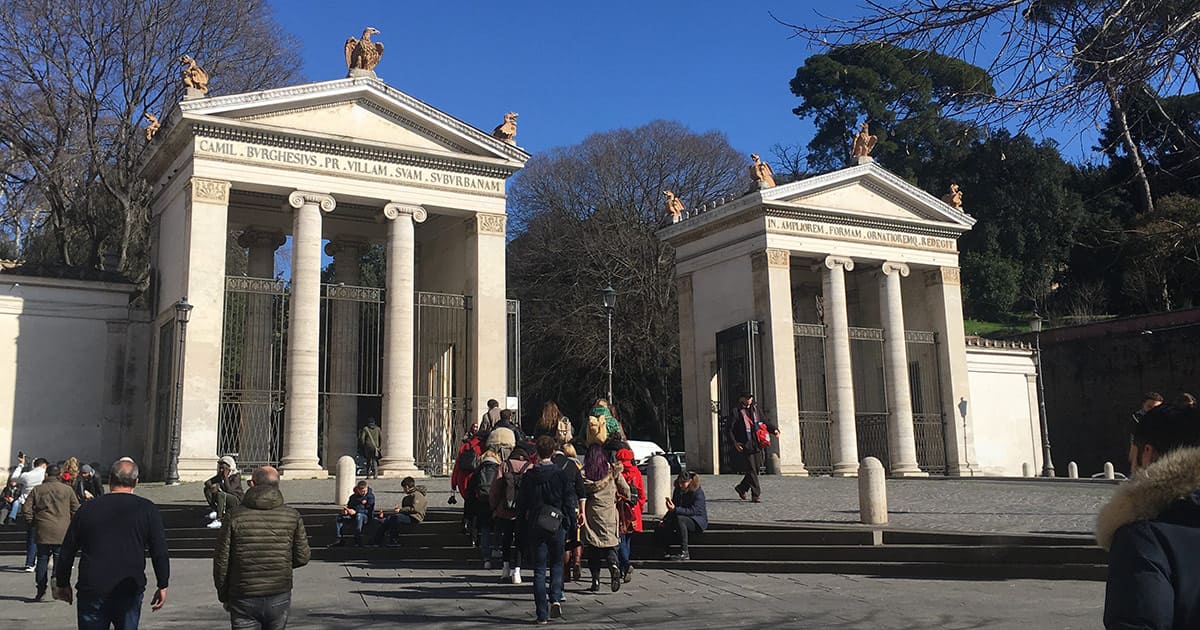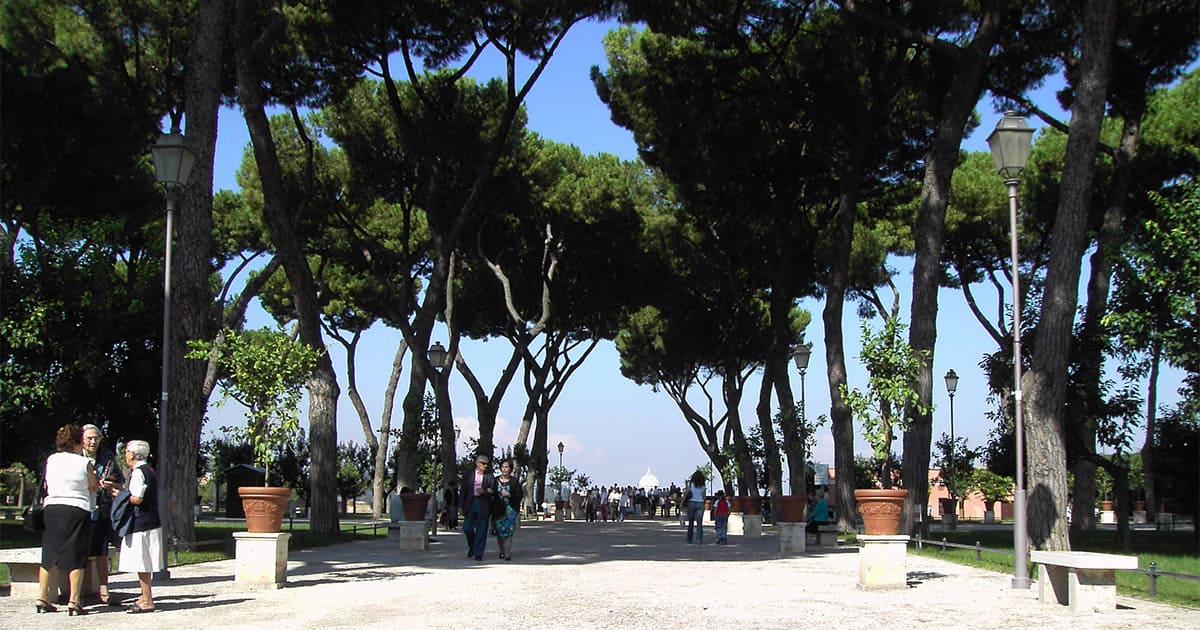Introduction
Most visitors who arrive at the Trevi Fountain are captivated by its sheer beauty. They toss a coin, snap a picture, and move on. But what very few realize is that beneath the cobblestones, just a few steps away, lies an underground world that tells a completely different story about Rome. This hidden treasure is called Vicus Caprarius – The City of Water, and it offers a fascinating glimpse into the layers of history that shaped the Eternal City.
As guides and locals who spend their days exploring Rome with travelers from all over the world, we’ve seen how often this spot is overlooked. And yet, it’s one of the most rewarding discoveries you can make in the historic center. Let’s walk you through its story – simple, clear, and with all the details that bring it to life.
The Trevi Fountain: More Than Just a Wish
The Trevi Fountain is one of the most iconic sights in Rome. Designed in the 18th century, it is a masterpiece of Baroque art, with Neptune at the center, surrounded by mythological figures and cascading water. For many travelers, the tradition is simple: toss a coin over your shoulder, make a wish, and secure your return to Rome.
But the fountain is more than a romantic backdrop. It is the grand finale of one of Rome’s ancient aqueducts, the Aqua Virgo. Built in 19 BC by Marcus Agrippa, the son-in-law of Emperor Augustus, this aqueduct was designed to supply water to the baths and fountains of ancient Rome. What makes the Aqua Virgo remarkable is its longevity: it still works today, more than 2,000 years later, and continues to feed the Trevi Fountain.
So when you stand in front of the fountain, you’re not just admiring Baroque art – you’re also looking at the endpoint of an ancient engineering marvel that has survived fires, invasions, and centuries of change.
Vicus Caprarius, the real name of Trevi Fountain Underground
Only a few meters from the Trevi Fountain, something extraordinary lies below street level. During the renovation of a cinema in the late 1990s, archaeologists uncovered the remains of an ancient residential complex. Open to the public since 2004, this site is now known as Vicus Caprarius, or the Trevi Fountain Underground.
Walking down into the underground space feels like stepping into a time capsule. The oldest remains date back to the aftermath of the great fire of 64 AD during Nero’s reign. At first, the site was home to an insula – the Roman version of an apartment building. These were multi-story blocks where ordinary citizens lived, much like modern condominiums.
Later, in the 4th century, the insula was transformed into an elegant domus, a luxury residence decorated with mosaics and marble. Over the centuries, the site changed again, surviving raids, looting, and eventually giving rise to a medieval settlement. Layer upon layer, Vicus Caprarius preserves the history of everyday Romans, from humble tenants to wealthy aristocrats.
What makes this place special is the way you can walk through centuries of history in a single space. Unlike the ruins above ground, here you see how Rome was built, destroyed, and rebuilt, again and again.
Why is it also called the City of Water?
The name “City of Water” isn’t just poetic, and there is a reason why Trevi Fountain Underground received this nickname. In the 2nd century AD, part of the complex was converted into a large castellum aquae, or water reservoir. Fed by the Aqua Virgo, this underground tank collected and distributed water to different parts of the city. Amazingly, water still flows here today, connecting this hidden space to the Trevi Fountain above.
For the Romans, water was not just a necessity but also a symbol of power and sophistication. Their aqueducts supplied fountains, baths, gardens, and private homes, making Rome a city that could afford to display abundance. Standing in front of the reservoir at Vicus Caprarius, you get a sense of that ingenuity. You can see how the system worked and how this hidden infrastructure supported the city we still admire.
This direct link between the ancient aqueduct and the Trevi Fountain ties together two experiences: one above ground, dazzling with baroque grandeur, and one underground, where the roots of Rome’s water culture are preserved.
Archaeological Treasures at Vicus Caprarius
As the excavations continued, archaeologists uncovered a wealth of artifacts that help us piece together daily life in ancient Rome. Visitors can see fragments of statues, colorful marbles, amphorae used for transporting oil, and intricate decorations that once adorned wealthy homes.
One of the most intriguing finds was a small treasure of over 800 bronze coins. Far from being a fortune, this stash likely represented the modest savings of a servant or laborer. For some reason, it was lost or hidden and never reclaimed. Today, it’s a reminder that even in a grand city like Rome, the lives of ordinary people left traces that we can still connect with.
Among the most celebrated discoveries is the marble head of Alexander Helios, son of Cleopatra and Mark Antony. This artifact, along with other refined pieces, shows the cultural and artistic richness that once filled these walls.
Taken together, these finds transform Vicus Caprarius into more than an archaeological site. They make it a place where the stories of emperors, aristocrats, and everyday Romans come alive.
Why Trevi Fountain Underground is Worth Visiting
Many visitors to Rome walk straight past Vicus Caprarius without even realizing it exists. That’s part of its charm: it’s still relatively quiet compared to other attractions, which means you can enjoy the site without the crowds you’ll find at the Colosseum or Vatican.
What makes it so rewarding is the contrast. You experience the sparkling drama of the Trevi Fountain above, then descend into the cool underground to discover the layers of history that sustain it. Together, they tell a complete story: one of spectacle and infrastructure, myth and engineering, surface beauty and hidden depth.
Exploring the site is straightforward, with clearly marked areas and exhibits. Still, having someone to explain the transitions from insula to domus, or the importance of the Aqua Virgo, adds depth. That’s why many travelers choose to combine a visit here with a guided walk through the Trevi area.
Whether you’re passionate about history or just curious to see something most tourists miss, Vicus Caprarius offers a chance to step off the beaten path and connect with Rome more intimately.
Conclusion
The Trevi Fountain dazzles with its grandeur, but just steps away, the underground world of Vicus Caprarius reveals another side of Rome. It’s a place where water, history, and daily life intersect, where the grandeur of emperors meets the traces of ordinary Romans. Together, the fountain and the Trevi Fountain Underground remind us that Rome is not just a city you see – it’s a city you uncover, layer by layer.
So next time you find yourself at the Trevi Fountain, don’t just toss a coin and move on. Take a few extra steps, go underground, and discover the secrets that flow beneath the surface. It’s one of those rare experiences that shows you Rome in a way most visitors never get to see.
Book Your Trevi Fountain Underground Tour
If you want to go beyond the obvious landmarks and discover Rome’s hidden gems, Trevi Fountain Underground is the perfect stop.
👉 Book your private tour in Rome now





